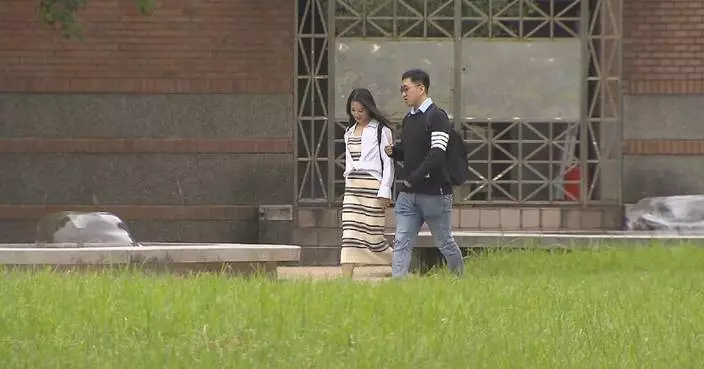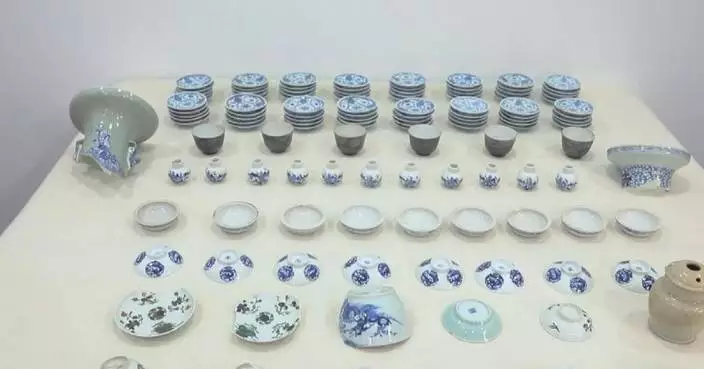Goran Vesic, Serbian Minister of Construction, Transport and Infrastructure, highlighted the significance of Chinese president's upcoming visit to Serbia, saying that the two countries are seeking to strengthen economic cooperation, particularly in the infrastructure construction.
At the invitation of Serbian President Aleksandar Vucic, President Xi Jinping will pay a state visit to Serbia in coming days, eight years after his last visit to the European country in 2016.
Speaking with China Global Television Network (CGTN) ahead of Xi's visit, Vesic said Serbia is drawing valuable insights from China's remarkable development story, focusing on the infrastructure construction.
"After President Xi Jinping's previous visit to Serbia in 2016, the country saw the construction of several highways and expressways, as well as a high-speed railway. This time, President Xi will be able to witness the outcomes from that visit. We decided that the foundation of our economic development should be based on infrastructure development. This is exactly what China did in the 2000s, when the country saw enormous economic growth and became one of the largest economies in the world," said Vesic.
The Serbian minister further emphasized the desire to foster closer economic ties with China.
"Serbia believes that the future of Europe is through cooperation with China. And this is not exclusive to us, many other EU members also share the same vision. That's why we will continue with our independent policy, and count on the support from China, and of course on the development of economic relations with China," he said.
President Xi left Beijing on Sunday morning for state visits to France, Serbia and Hungary, which are scheduled from May 5 to 10.

Serbian minister highlights further infrastructure cooperation with China
Chinese scientists have recently worked together and rebuilt the face of an ancient Chinese ethnic minority emperor via cutting-edge DNA technology.
Emperor Wu of the Xianbei-led Northern Zhou Dynasty (557-581), also known as Yuwen Yong, was an ambitious leader who died at 36. He belonged to the Xianbei nomadic group, which originated from the Mongolian Plateau.
The tomb of the emperor was discovered in 1993 in a village of the city of Xianyang in northwest China's Shaanxi Province. His skull and bones were discovered during an excavation held in 1994 and 1995 at the site of his tomb.
In late March this year, scientists led by the Shaanxi Provincial Institute of Archaeology and the Institute of Archaeological Science of Fudan University managed to decode key features of the emperor and speculate about his cause of death. The emperor might have died from chronic arsenic poisoning due to long-term use of a pellet, which was believed by ancient people to achieve eternal life.
"First, the skeleton can be used to determine age. Second, in terms of age and gender, some pathological research can also be done to see if he had any fractures or other (diseases)," said Zhang Jianlin, a researcher from the Shaanxi Provincial Institute of Archaeology.
Obtaining high-quality genomic data is crucial for restoring the face. Through DNA paleogenomics techniques and optimized DNA extraction, database building and capture methods, more history was revealed.
"First, we have done the shorter fragments enrichment method, which is a DNA extraction method. In addition, we have developed some more sensitive database building method suitable for ancient samples with short fragments. You can regard it as a method to amplify the genetic signal, the extracted DNA. The third is that we have developed a capture method that is more suitable for this kind of highly degraded ancient samples. So we have optimized and improved our approach from three aspects at the same time," said Wen Shaoqing, an associate professor of the Institute of Archaeological Science of Fudan University.
The reconstructed face showed that Yuwen Yong had black hair, yellow skin and brown eyes, while his appearance was typical for people from East or Northeast Asia.
Wen said that with the help of the DNA technology, the accuracy of facial restoration can reach 90 percent.
"As for the accuracy of (facial restoration), the current situation is that if there is a skull as a basis, its accuracy will be relatively high," said Wen.

Scientists rebuild face of ancient emperor using advanced DNA technology










